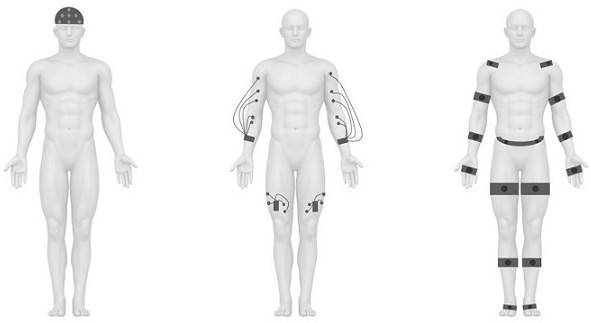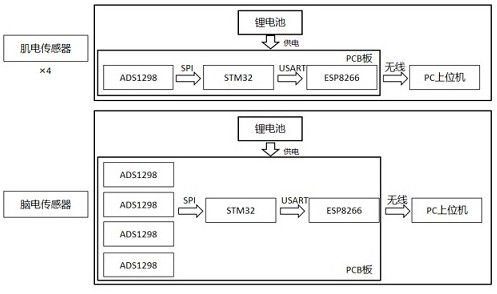Quantitative evaluation method for two-way coupling information conduction path of human body and sensing system
A two-way coupling, quantitative evaluation technology, applied in the field of medical devices, achieves high time resolution and simple preparation
- Summary
- Abstract
- Description
- Claims
- Application Information
AI Technical Summary
Problems solved by technology
Method used
Image
Examples
Embodiment 1
[0057] Example 1: A quantitative evaluation method for two-way coupled information transduction pathways in the human body for epilepsy patients
[0058] Epilepsy is one of the most common diseases of the nervous system. Its pathogenesis is the sudden abnormal discharge of brain neurons, leading to transient brain dysfunction. Seizures vary in behavior, and can be manifested as generalized tonic-clonic seizures, absence seizures, tonic seizures, myoclonic seizures, and convulsions.
[0059] The key to the diagnosis and treatment of epilepsy is the accurate localization of brain lesions. The current methods of epilepsy localization mainly rely on symptomology. side; when the patient has movements like rolling pills and counting money during seizures, it is usually temporal lobe seizures. However, the symptoms depend on the doctor's observation and are greatly influenced by the doctor's subjectivity. At present, there is a lack of effective quantitative evaluation methods.
[...
Embodiment 2
[0061] Example 2: A quantitative evaluation method for two-way coupled information conduction pathways in the human body for Parkinson's patients
[0062] Parkinson's is a common neurodegenerative disease, more common in the elderly. The first behavior is usually a tremor or clumsiness in one limb, which then involves the contralateral limb. Clinically, the main manifestations are resting tremor, bradykinesia, muscle rigidity, and posture and gait disturbance. In most patients, tremor is the first behavior, which usually starts from the distal end of one upper limb. It appears or is obvious when at rest, and decreases or stops when voluntary movement. The resting tremor of the hand is aggravated when walking.
[0063] This specific implementation example uses EEG sensors, EMG sensors, and nine-axis inertial sensors at the same time. Doctors can choose the position of EMG electrodes and inertial sensors according to the actual situation of the patient. For example, patients w...
Embodiment 3
[0064] Example 3: A Quantitative Evaluation Method for Two-way Coupling Information Conduction Pathways in Human Body for Stroke Patients
[0065] Stroke is a disease in which blood cannot flow to the brain due to rupture or blockage of blood vessels in the brain, causing damage to brain tissue. The behavioral manifestations are generally dizziness, numbness of one side of the face or hands and feet, involuntary twitching of one side of the limbs, sudden falls or fainting for unknown reasons. The root cause of these behaviors is that the motor nervous system is damaged, which leads to the inability to achieve good coordination between the descending control signal and the ascending feedback signal in the two-way information transmission pathway.
[0066] At present, the evaluation of the behavior of stroke patients mostly relies on the subjective experience of doctors, which is inefficient, lacks substantial reference, and lacks quantitative evaluation methods. Therefore, the...
PUM
 Login to View More
Login to View More Abstract
Description
Claims
Application Information
 Login to View More
Login to View More - R&D Engineer
- R&D Manager
- IP Professional
- Industry Leading Data Capabilities
- Powerful AI technology
- Patent DNA Extraction
Browse by: Latest US Patents, China's latest patents, Technical Efficacy Thesaurus, Application Domain, Technology Topic, Popular Technical Reports.
© 2024 PatSnap. All rights reserved.Legal|Privacy policy|Modern Slavery Act Transparency Statement|Sitemap|About US| Contact US: help@patsnap.com










